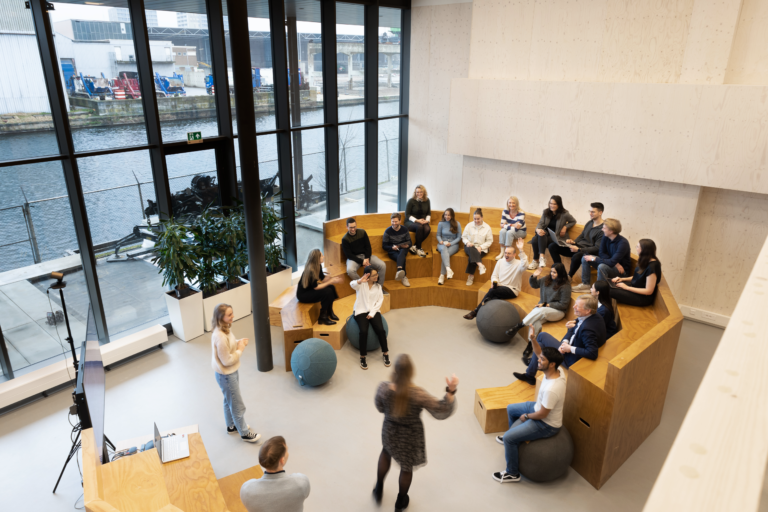As a business coach at Unknown University of Applied Sciences, Jeroen Coelen guides students along in their start-up journey, as he provides coaching opportunities where students can expect honest feedback, inspiration, and relevant advice. Jeroen uses his expertise in navigating the early stages of start-ups in order to inspire students to begin new ventures with confidence. With his blogs, Jeroen offers practical tips on developing problem-fit solutions, suggests ways to better understand your customers, and recommends frameworks that help make sense of the chaos of start-ups. We are lucky to host Jeroen’s blogs, as they provide unique insights regarding the nature of the start-up process, continue reading below.
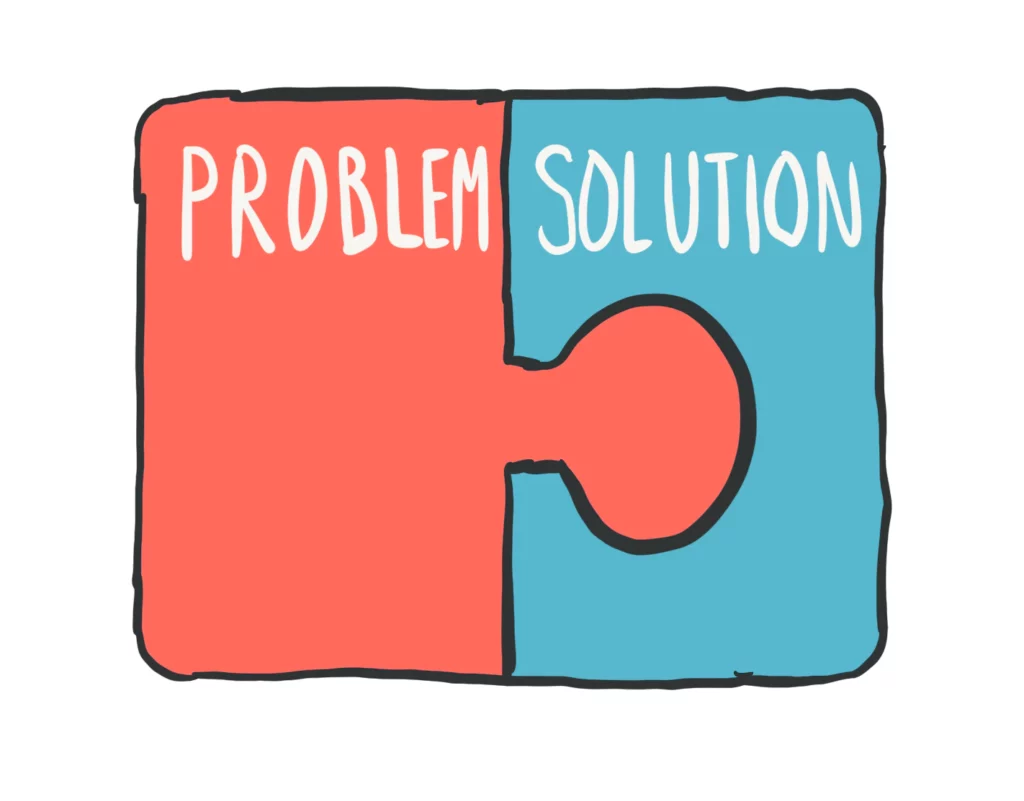
Startups need to build something people want.
People buy solutions that help them achieve goals (or a job to be done). Problems stand in the way of those goals.
Building a solution that solves a problem is a great way to attract customers.
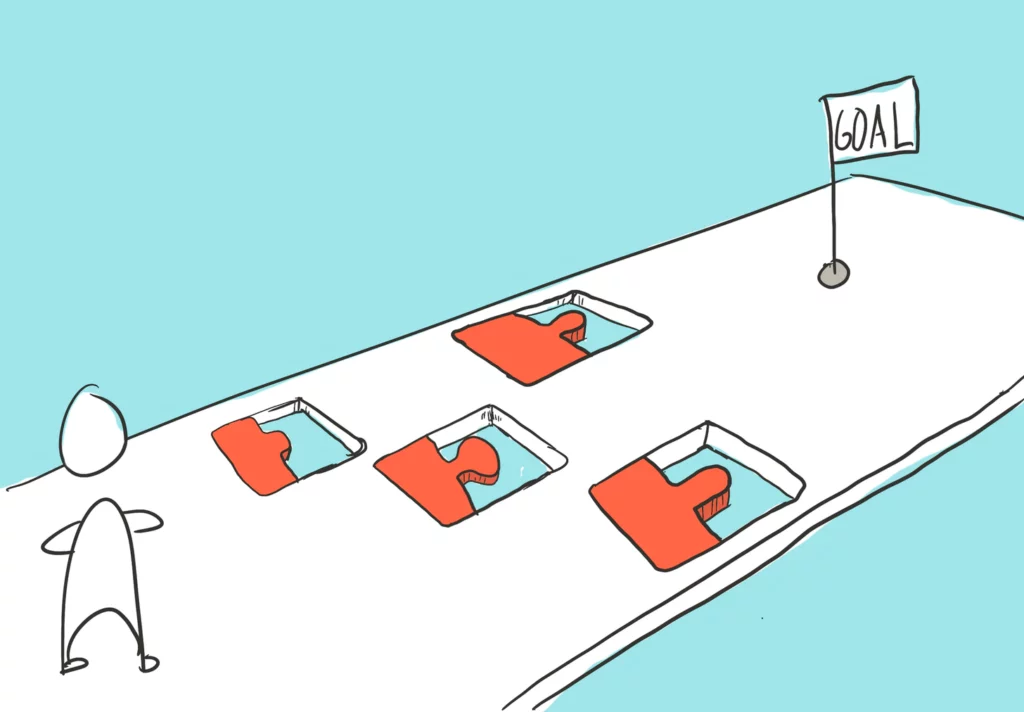
Having a proper fit between problem and solution is a crucial milestone and has many nuances.
In this post, I will show how achieving problem-solution fit is not only a process of iterating your solution.
A problem well-stated is a problem half-solved
Charles F. Kettering (head of research at GM)
problems evolve, too
How do we arrive at good problem-solution combinations?
For this, I will introduce you to the problem and the solution ‘space’ via the means of an experiment conducted 20 years ago (original paper from 2001) by Kees Dorst and Nigel Cross. Both Dorst & Cross are prominent design scholars.
a design experiment
Dorst & Cross gave 9 designers an assignment of designing a new waste bin for InterCity trains in the Netherlands. The designers were supplied with a literal pile of information, such as pictures of the current designs and feedback from customers.
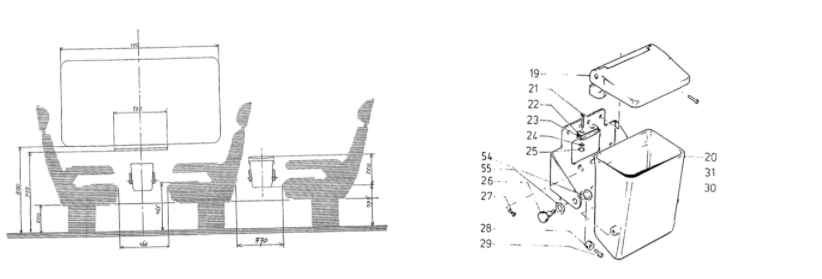
The researchers then observed how the designers went about creating a better solution.
The designers went through the pile of documents, reading and observing the documents, trying to understand the current situation. Subsequently, they turned this into a sketch of the current situation.
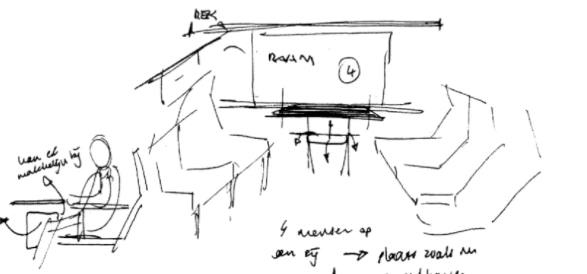
After spending some time on the current situation, the designer started to design new wastebins (below). And presto. New waste bins designed.
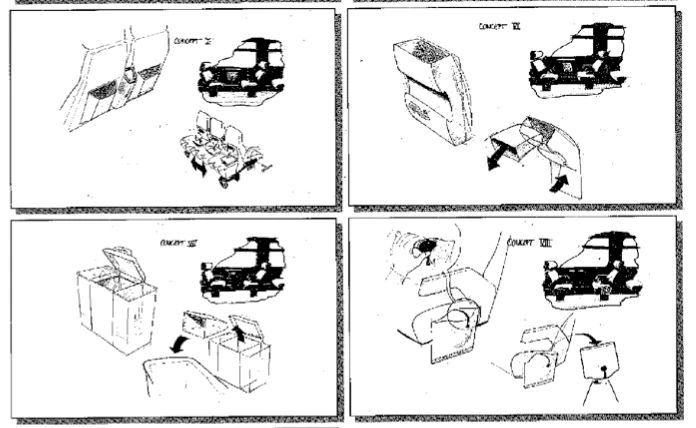
Problem solved? Well, yes. But then the researchers observed the following. The designers went back to that pile of information.
When they reexamined the information, they suddenly found a striking detail.
There were a lot of complaints regarding how fast newspapers filled up the bins, so in response, they decided to create a separate wastebin specifically for newspapers.
In this experiment, all 9 designers had this reframe of the problem to zoom in on the newspapers.
9 out of 9 designers reported an A-ha moment.
And, 9 out of 9, felt their solution was unique.
oscillating between the problem and solution space
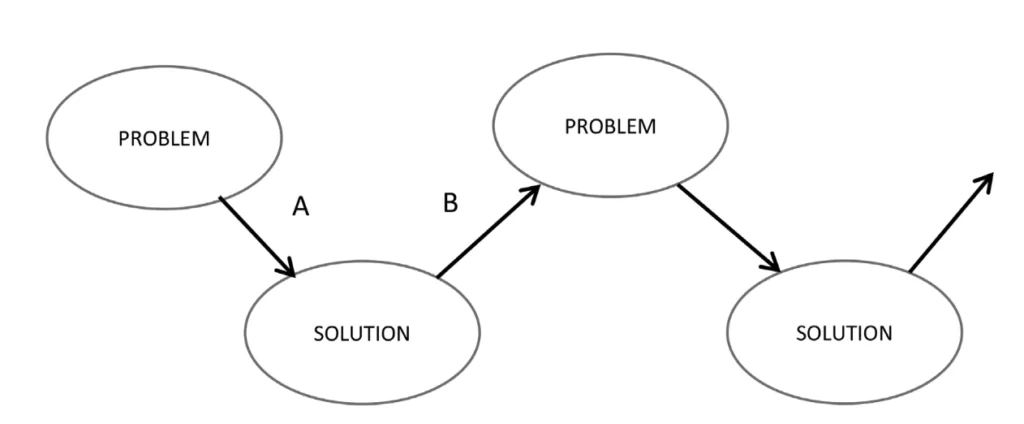
The scientists observed that the designers frequently oscillated between the problem and solution space.
- They started in the documents and sketched the situation → problem space
- Then they made some first designs → solution space
- Then in the documents, they found a new way of framing the problem → problem space
- Designing a new waste bin with a newspaper slot → solution space
By working on the solution, it seemed that their understanding of the problem space grew. All of a sudden, despite not noticing before, the information about the newspapers became relevant.
The experiment shows just two iterations between the problem and solution space. However, in real life, this can go on much more.
So what are these problem and solution spaces?
problem space
The problems pace is a mental space, it’s your understanding of reality. As an entrepreneur, designer, innovator or product manager, you try to make sense of an existing situation where your users live.
It is advised to do so, it increases your odds of success.
You make sense of the situation by observing, talking to customers and other stakeholders. By doing this, you build up a picture of the problem space.
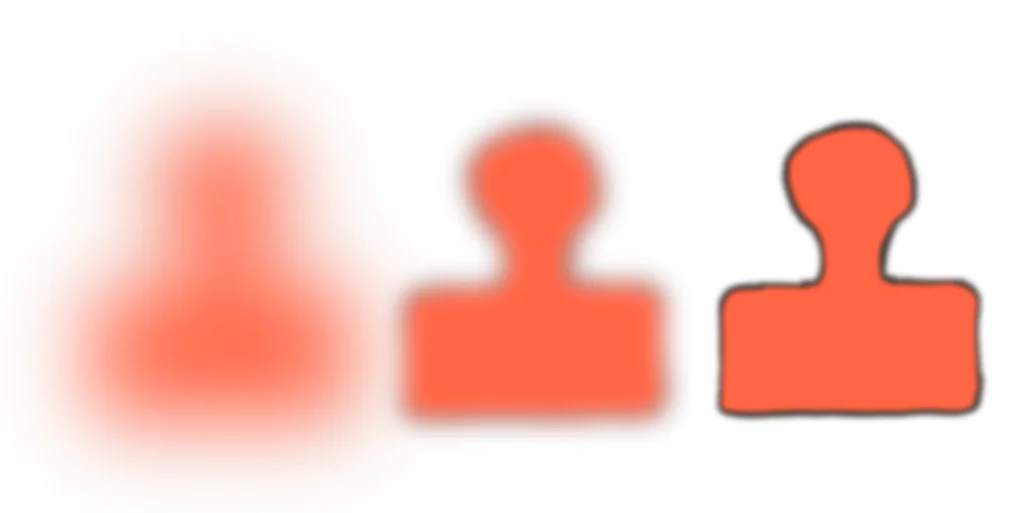
Your interaction with the world makes the problems clearer. At first, the picture is quite blurry, but with time that changes.
The problem space is not limited to one problem; multiple problems can co-exist in the problem space. It is your understanding of the entire situation.
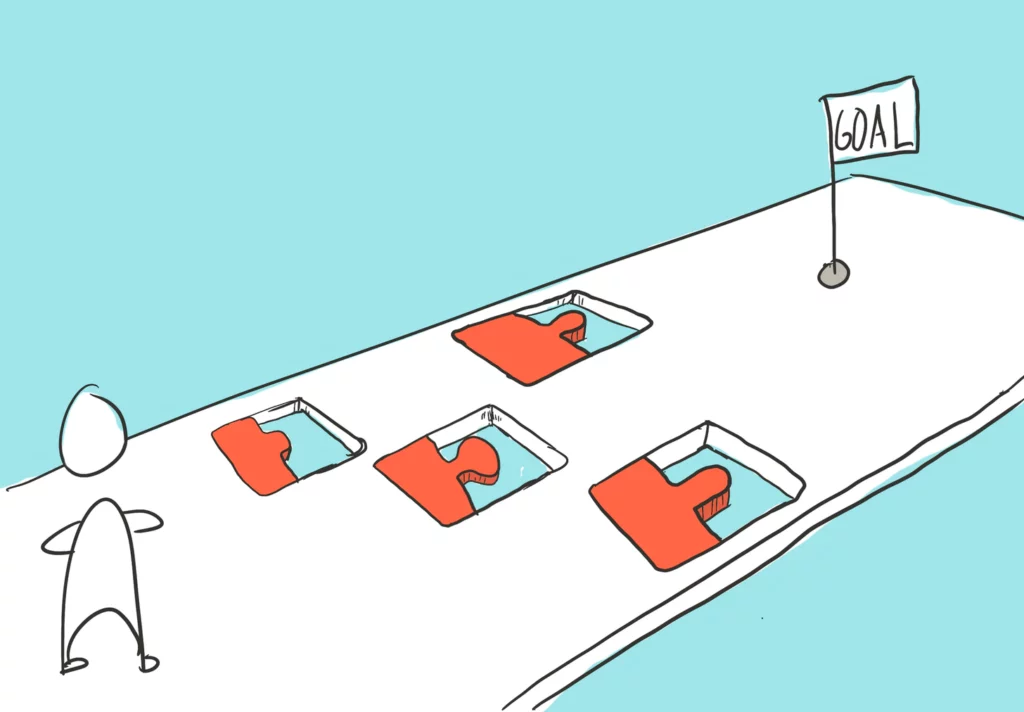
solution space
The solution space houses all your product ideas.
For instance, the product concepts that emerge from the brainstorm with your team live here. Or your sketches on your app idea all live in the solution space.
The shape and nature of the problems influence the shape of the potential solutions. The solution space is the mental space where these potential solutions exist.
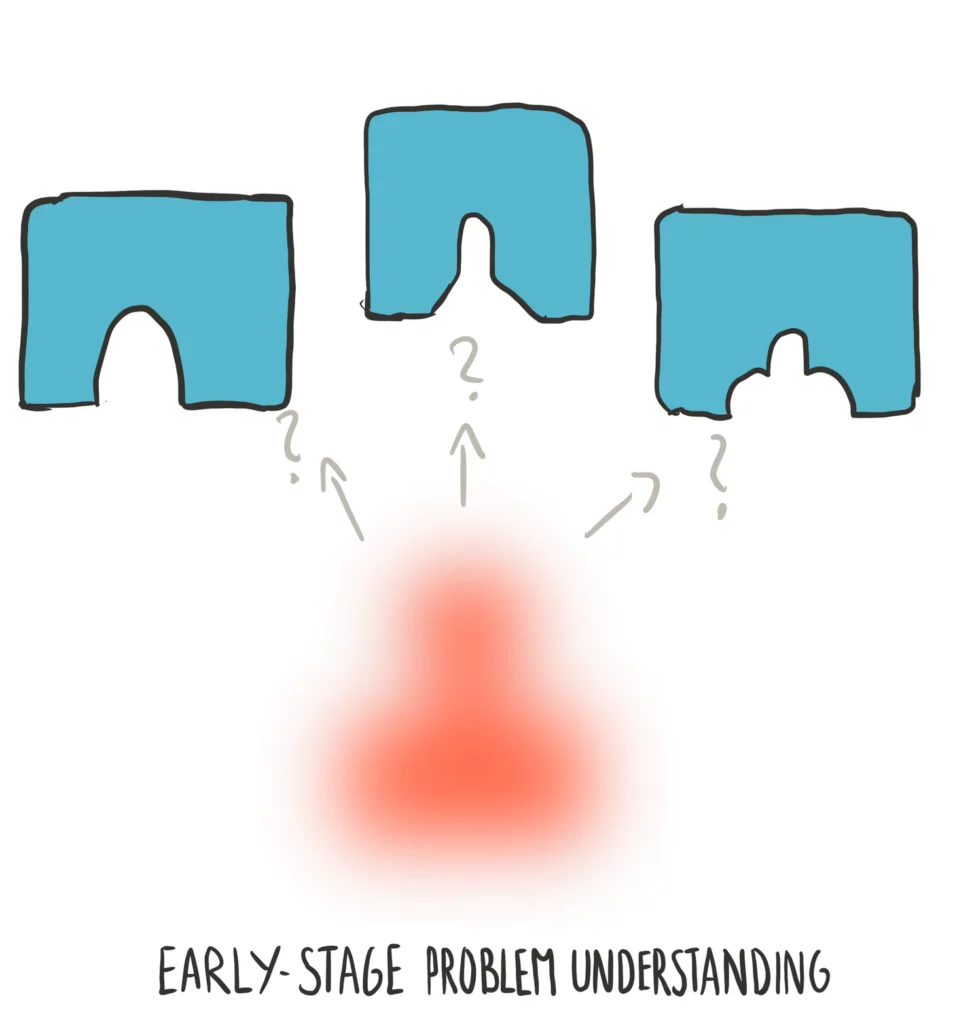
Depending on your understanding of the problem, you will design different solutions. It is very hard to design the right solution if you don’t understand the problem properly. And the variety of solutions is higher when your problem clarity is lower as more solutions seem to fit.
This is what we often encounter early in a startup process. Founders considering solutions A, B and C. This is often a sign that the founder doesn’t understand the problem well enough yet.
co-evolution of the problem-solution
Both problem and solutions evolve in understanding, clarity, details and concreteness over time.
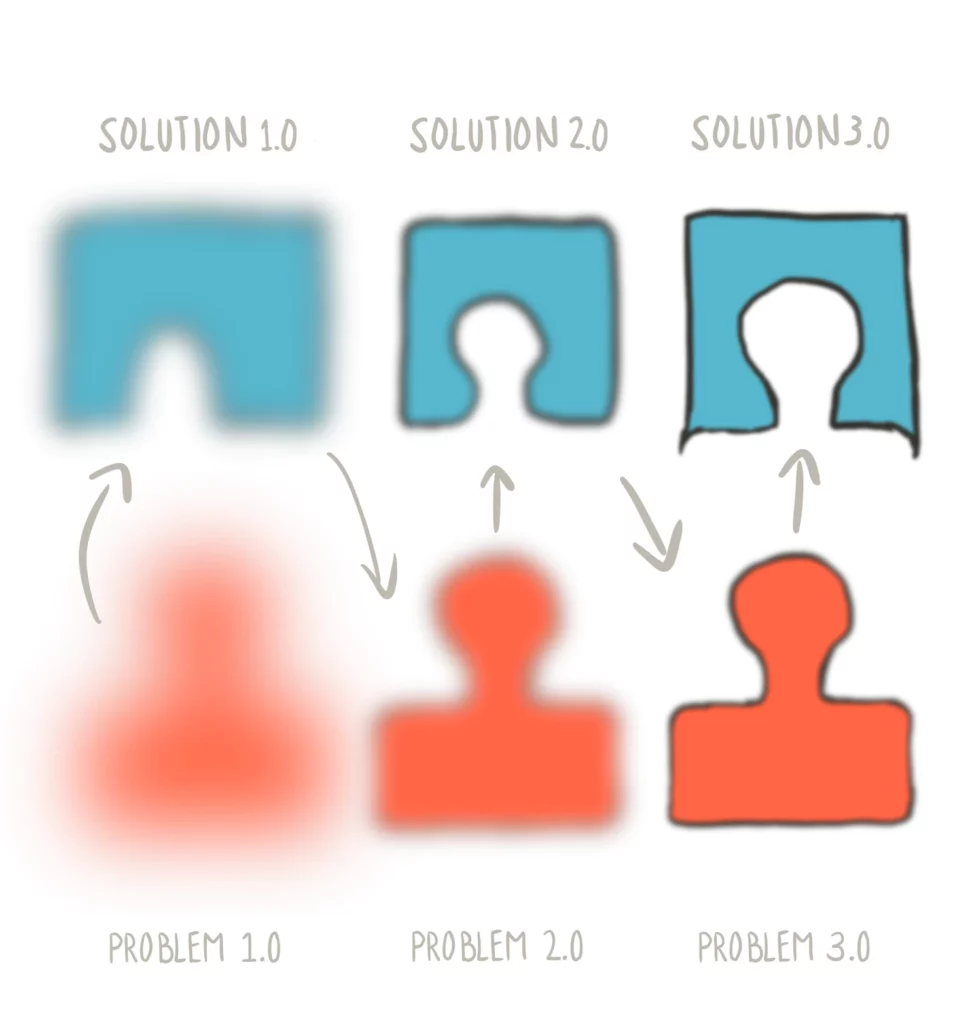
The fidelity of the solution will increase. The first solution might be represented in a sentence describing ‘a wastebin with a newspaper slot’. That’s not a lot of detail but sets a direction.
The 2nd version of that solution might be a quick sketch, where much more detail is added. A 3rd version could be a detailed sketch where the designer thinks about which materials to use.
A 4th version could be a rapid prototype. Each of these versions has more details. This means that it contains more decisions made.
summary
You want your solution to solve a problem. Achieving fit her is key.
Proper problem-solution fit is a combination of understanding your customer’s problem AND solution really well.
This is achieved by oscillating between the problem and the solution space.
From this, a proper fit can evolve.
tips for practice
Explore the problem space
Get into the problem space. Use interviews and observations. Surveys are better used to quantify found qualitative results. I wouldn’t start with a survey, as it allows for focused information gathering.
Don’t fixate the problem at the start
Corporates love to do this: define the problem in week 1 and not touch that definition anymore. It’s force-fitting certainty in an uncertain process. Revisit your problem statements. It’s okay to write down your assumptions of the problem, but make sure you remain flexible.
Don’t try to fix too many problems with one solution
Often people want to create a Swiss-army knife. Don’t fall for this trap. Doing one thing really well is a great strategy over doing 10 things mediocre.
Stuck? Jump to the other space
When you feel stuck in your process, go to the other space. Are you not learning anything new in your problem space exploration? Go to the solution space, design a solution. Don’t know what to do about your solution? Go to the problem space. This could mean doing new interviews or experiments. You will see new things.
Don’t compare apples and oranges
Your understanding of various problems will not increase evenly. Some problems will be easier for you to grasp than others. What I often see is that people are drawn to clarity. So, the problem they understand gets prioritised.
Not necessarily a bad thing, but ask yourself if you are not comparing apples and oranges.
This goes for solutions too. I’ve seen teams being disappointed with the results of solution A. This makes their underexplored solution B seem more lucrative.
It is not per see more lucrative, yet it is more unknown. Therefore it seems to yield more potential. Only after exploring such a solution, bringing it on par with solution A, one can draw more realistic conclusions about the two.
jeroen’s take
It’s funny to see that the new wastebins never were actually implemented. Waste bins in the trains of today don’t have newspaper slots, but the demise of the newspaper since 2000 might attribute to that.
The problem and solution space are ways to look at a fuzzy process. They do not capture every aspect of a startup journey. Yet, it functions as a lens to explain some elements of that journey. It could be considered probing questions for yourself.
Above, I’m simplifying problem identification. This is twofold. Firstly, a problem is a subjective entity, it’s an experience of people. This makes the ‘measurement’ of problems harder than measuring whether water is boiling or not. More on that in the future.
Secondly, what I am now seeing in my data, is that problems often start with a broad idea of a problem. Think about ‘climate change’. We consider that problematic, but as I’ve shown before, we can find subproblems to these problems.
Or perhaps, we can find new frames for this problem. If you like the idea of problem frames and reframes, I suggest reading Frame Innovation by Kees Dorst.
Lastly, not all solutions solve a problem. Some solutions help users meet a need. Clothing brands are an example of this.
The problem of covering ourselves so that we are not naked is not an issue. It’s more about the aspiration of the user to feel like something by expressing themselves. A problem might not be experienced here.
As for the problem, a need is a subjective experience. And that need can grow in clarity too, just like a problem.




